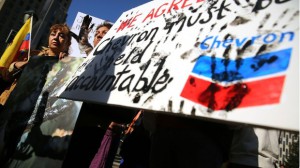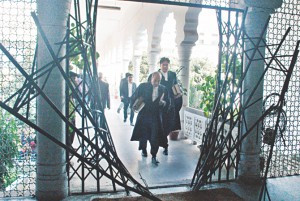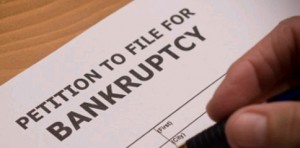Product identification fraud and asbestos bankruptcy trusts: Lessons from In Re Garlock
By Goli Rahimi, Chicago on March 25, 2015
The April 13, 2015 issue of Forbes magazine features a detailed article about the role product identification fraud played in the Garlock bankruptcy, In re Garlock Sealing Techs., LLC, 504 B.R. 71 (Bankr. W.D.N.C. 2014). At the heart of the litigation is how these fraudulent claims affected the proposed value of the trust. Certainly, in asbestos litigation in particular, the value placed on a single case by the plaintiff and defense bars will vary wildly. The Garlock litigation demonstrated that the gulf is even wider when the value of all future cases is at stake. However, the Garlock court made one thing very clear: product identification fraud is never a good basis to establish trust value.
After exhausting its insurance as a result of thirty years of asbestos litigation and settlements, Garlock, a producer of asbestos gaskets, filed a Chapter 11 petition in June 2010. In approving Garlock’s reorganization plan Judge Hodges wrestled with whether the plaintiffs’ attorneys’ estimate of Garlock’s present and future asbestos liability ($1.0 – 1.3 billion) was a “reasonable and reliable” determination. After a seventeen-day hearing that included testimony from twenty-nine witnesses and hundreds of exhibits, Judge Hodges sided with the defense and set Garlock’s liability for present and future mesothelioma claims at no more than $125 million. In doing so, Judge Hodges rejected many of plaintiffs’ arguments suggesting a higher value.
The difference in estimates was attributed to each side’s distinct approaches to estimation in asbestos liability cases; Garlock offered a “legal liability” approach which considered the merits of the claims in the aggregate, while the plaintiffs utilized a “settlement” approach based upon an extrapolation of Garlock’s history of resolving mesothelioma cases.
Ultimately, the court sided with Garlock, finding that while the “settlement” approach may be used in some contexts, its application was not appropriate for Garlock for two reasons. First, the information from Garlock’s settlement history did not “accurately reflect fair settlements” because exposure evidence was withheld. Evidence presented to the court showed that plaintiffs in Garlock’s asbestos cases would engage in widespread withholding of evidence of exposure to other asbestos products “to delay filing claims against bankrupt defendants’ asbestos trusts until after obtaining recoveries from Garlock.” This practice effectively “rendered that data [based on historical settlements paid by Garlock] useless for fairly estimating Garlock’s liability to present and future claimants.”
Garlock’s settlement data – along with detailed supporting expert witness testimony and analysis – showed that cost avoidance, not potential liability, was the motivating factor in civil settlement values. Indeed, the court noted that Garlock’s expense of litigating an asbestos injury case “far exceeded” the $75,000 average settlement paid to claimants; specifically, Garlock overwhelmingly settled cases in groups without regard to liability and virtually entirely to avoid the costs of litigation. “Thus, even where the likelihood of an adverse verdict was small, the prospect of a huge verdict and the great expense of defending a trial drove Garlock to settle cases regardless of its actual liability.”
One of the most interesting aspects of the decision was Judge Hodges’ delineation of principles to decide the proper method of liability estimation:
- Fair Estimates.
Judge Hodges recognized the need for a delicate balance between compensating harmed individuals and the possibility that a once viable company will become extinct.
- Type of Asbestos Products.
There is a great variety in the history of asbestos litigation, as some cases involve low-dose producers and disputed causation, while others include high doses of asbestos. All aspects of such litigation are considered. The low exposure of Garlock’s products warranted a “de minimis” liability.
- Use of Debtor’s Claims Resolution History.
Judge Hodge noted that “no court has held that analysis of a debtor’s claims resolution history is the exclusive means to estimate liability.” While some courts analyze the merits of claims, others conclude that the bankruptcy court has discretion to determine the appropriate method in light of the particular circumstances of the bankruptcy case before them.
These principles, along with the specific data produced by Garlock of its “legal liability,” persuaded the bankruptcy court to cap Garlock’s aggregate liability for present and future mesothelioma claims at $125 million.
Notably, plaintiffs’ attorneys argued for the “cost of settlement” approach, an approach employed in the establishment of other trusts, but the court rejected this based largely on the withholding of evidence in the underlying cases. In a statement following the decision, a Garlock spokeswoman noted that it was the “first time in more than 80 asbestos bankruptcies that the court didn’t accept the plaintiffs’ estimate of future claims.” In fact, before Garlock, there was little public evidence to support Garlock and other defendants’ claims that asbestos plaintiffs manipulated or influenced evidence of exposure. While the courts had routinely allowed discovery of bankruptcy trust claims, the expansive allegations of fraud in the Garlock case sparked a redoubling of efforts to obtain trust information. For instance, in Sweredoski v. Alfa Laval, Inc., 2014 R.I. Super. LEXIS 14 (R.I. Super. Ct. 2014), the court upheld the right of Crane Co. to obtain discovery of these claim forms, as forms may contain inconsistent statements which would “go directly to the credibility of [the decedent’s] allegations that exposure to Crane’s products caused his injuries.”
Judge Hodge’s opinion paints a vivid picture of the discovery abuses that happen in asbestos cases where there is a lack of transparency and control over the scientific evidence supporting a claim – and the impact that those abuses may have in the establishment of a trust. The issues raised in Judge Hodge’s decision (presently on appeal) are guaranteed to have lasting impact on future bankruptcies and claims, and to cause skepticism of a plaintiff’s counsel’s estimate on ultimate value.

 The Second Circuit’s decision will provide legal scholars much to discuss. After all, Donziger’s attorneys attacked the decision as unprecedented in that the trial court allowed Chevron, which had lost its case in Ecuador, to use a U.S. district court to attack the foreign damages award. However, at its roots, the Donziger RICO litigation was not really about issues such as jurisdiction or the enforceability of foreign judgments. Rather, it was about Donziger and his legal team’s brazen violations of ethics and norms when it prosecuted the Chevron case in Ecuador. The Second Circuit’s decision demonstrates that the court simply could not abide the evidence of legal misconduct. Specific instances of ethical misconduct by Donziger cited by the Second Circuit include the following examples:
The Second Circuit’s decision will provide legal scholars much to discuss. After all, Donziger’s attorneys attacked the decision as unprecedented in that the trial court allowed Chevron, which had lost its case in Ecuador, to use a U.S. district court to attack the foreign damages award. However, at its roots, the Donziger RICO litigation was not really about issues such as jurisdiction or the enforceability of foreign judgments. Rather, it was about Donziger and his legal team’s brazen violations of ethics and norms when it prosecuted the Chevron case in Ecuador. The Second Circuit’s decision demonstrates that the court simply could not abide the evidence of legal misconduct. Specific instances of ethical misconduct by Donziger cited by the Second Circuit include the following examples: wrongful death case. Sam Davis worked as an auto mechanic and home remodeler from approximately 1963 to 1979. He performed “one or two” brake jobs per day, and always used Bendix brake linings (for which defendant Honeywell was responsible). These linings contained 50 percent chrysotile asbestos by weight. He was also allegedly exposed to asbestos as a result of his home remodel work.
wrongful death case. Sam Davis worked as an auto mechanic and home remodeler from approximately 1963 to 1979. He performed “one or two” brake jobs per day, and always used Bendix brake linings (for which defendant Honeywell was responsible). These linings contained 50 percent chrysotile asbestos by weight. He was also allegedly exposed to asbestos as a result of his home remodel work.